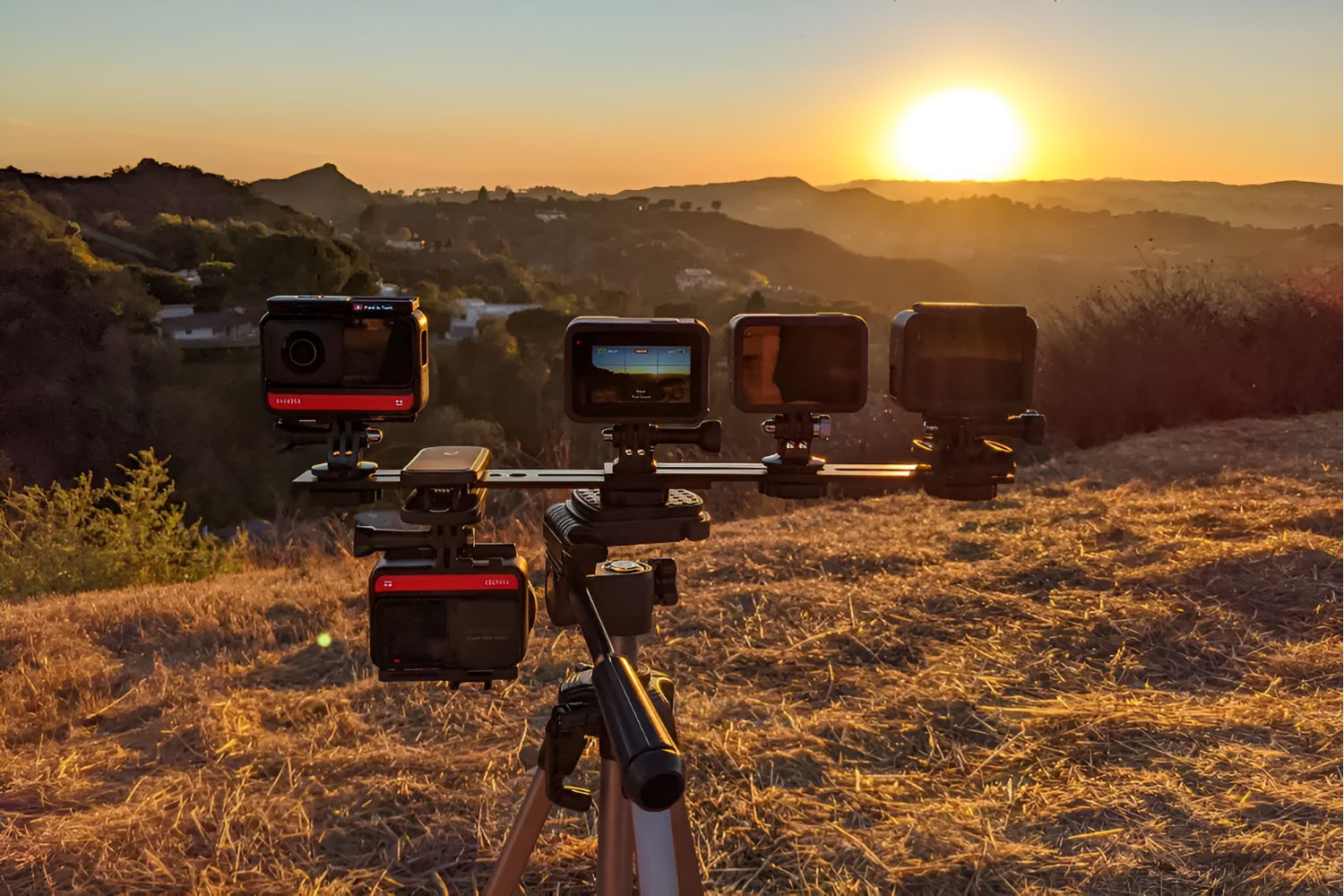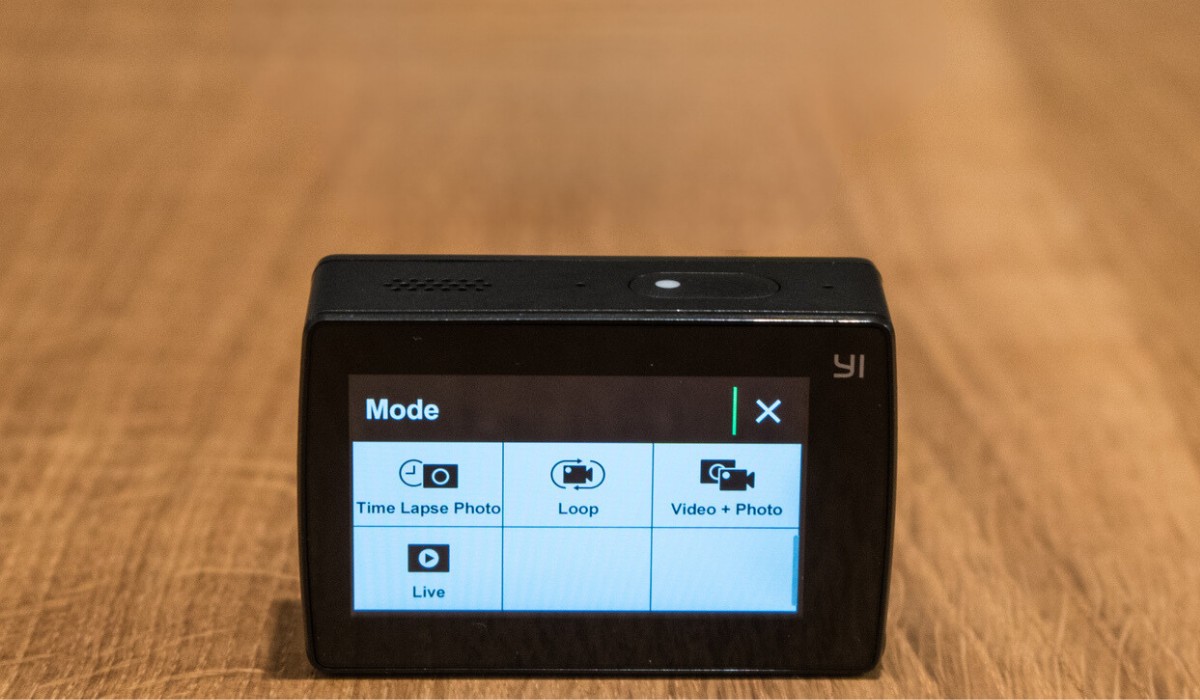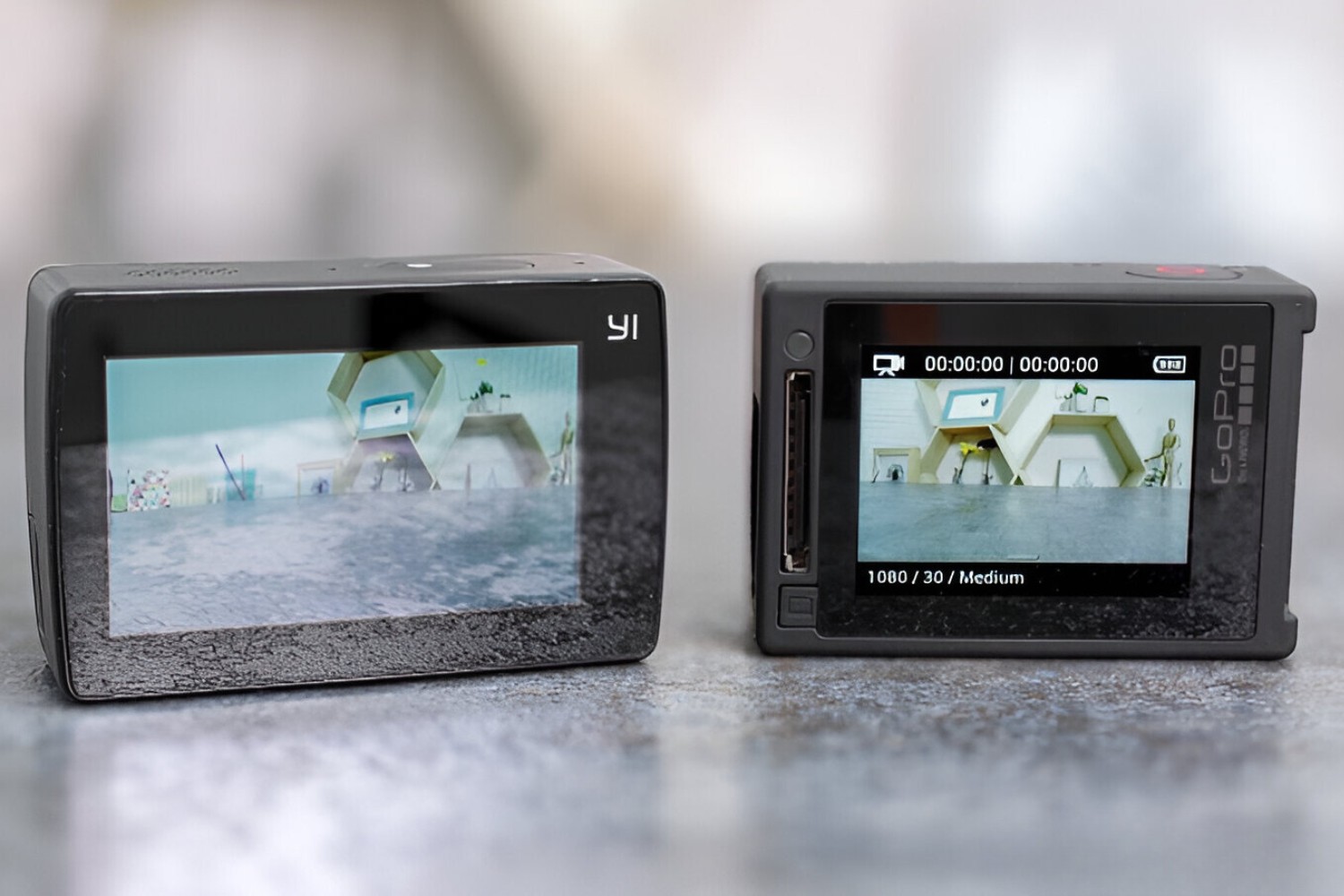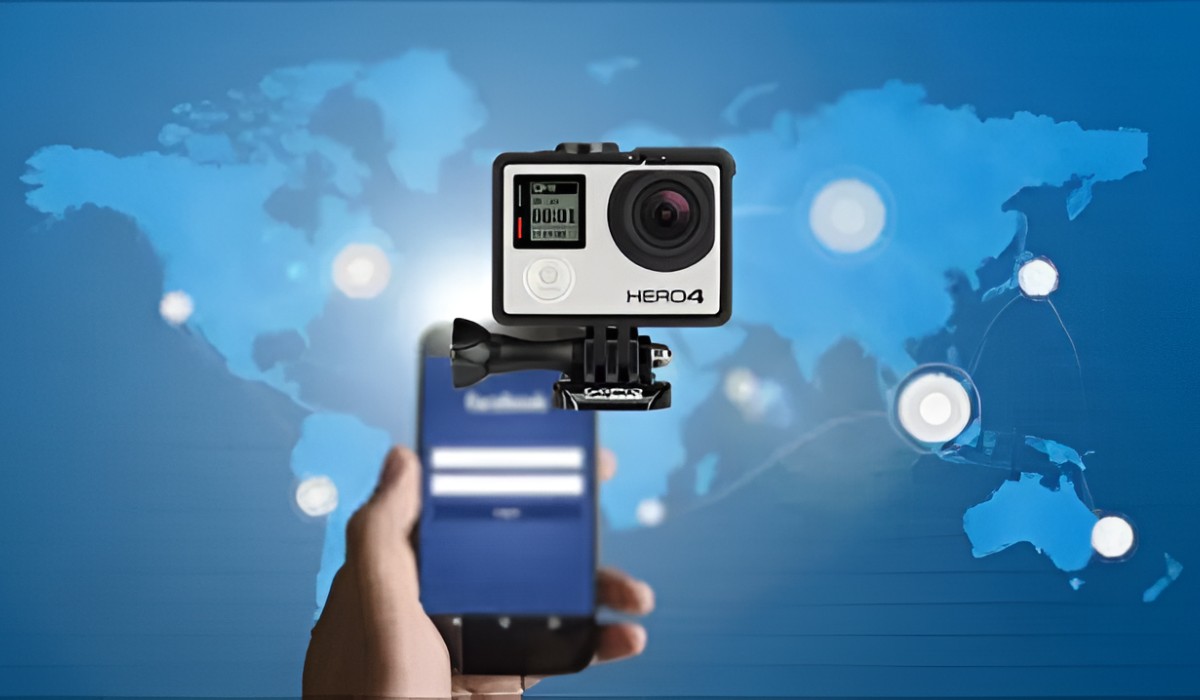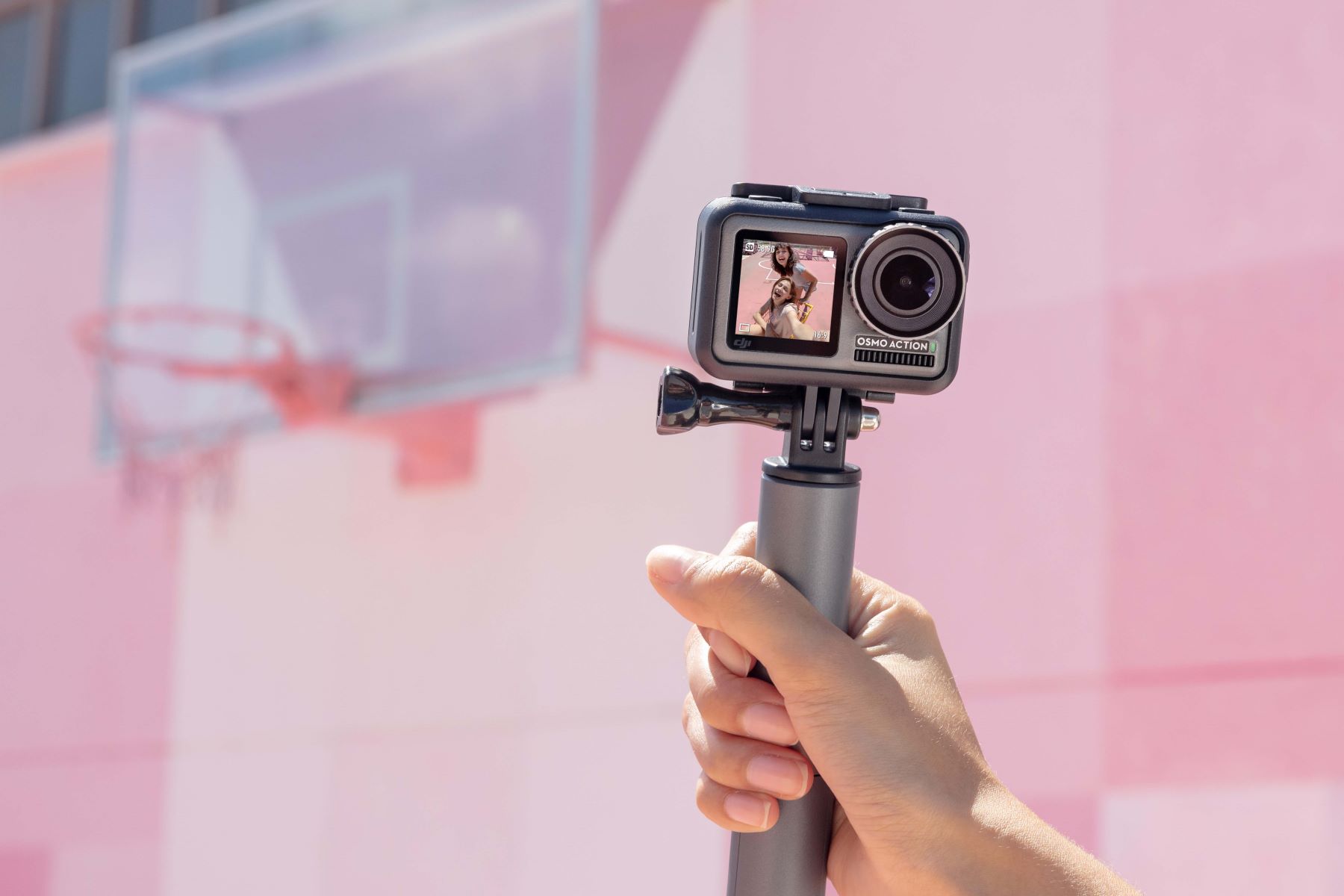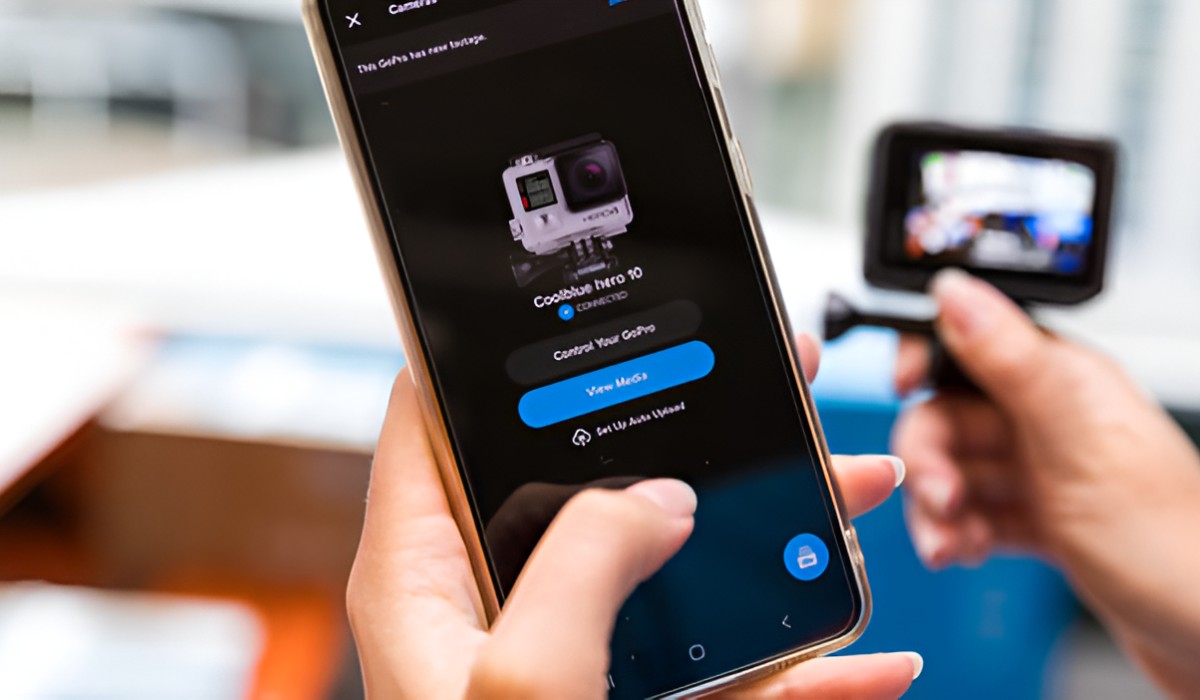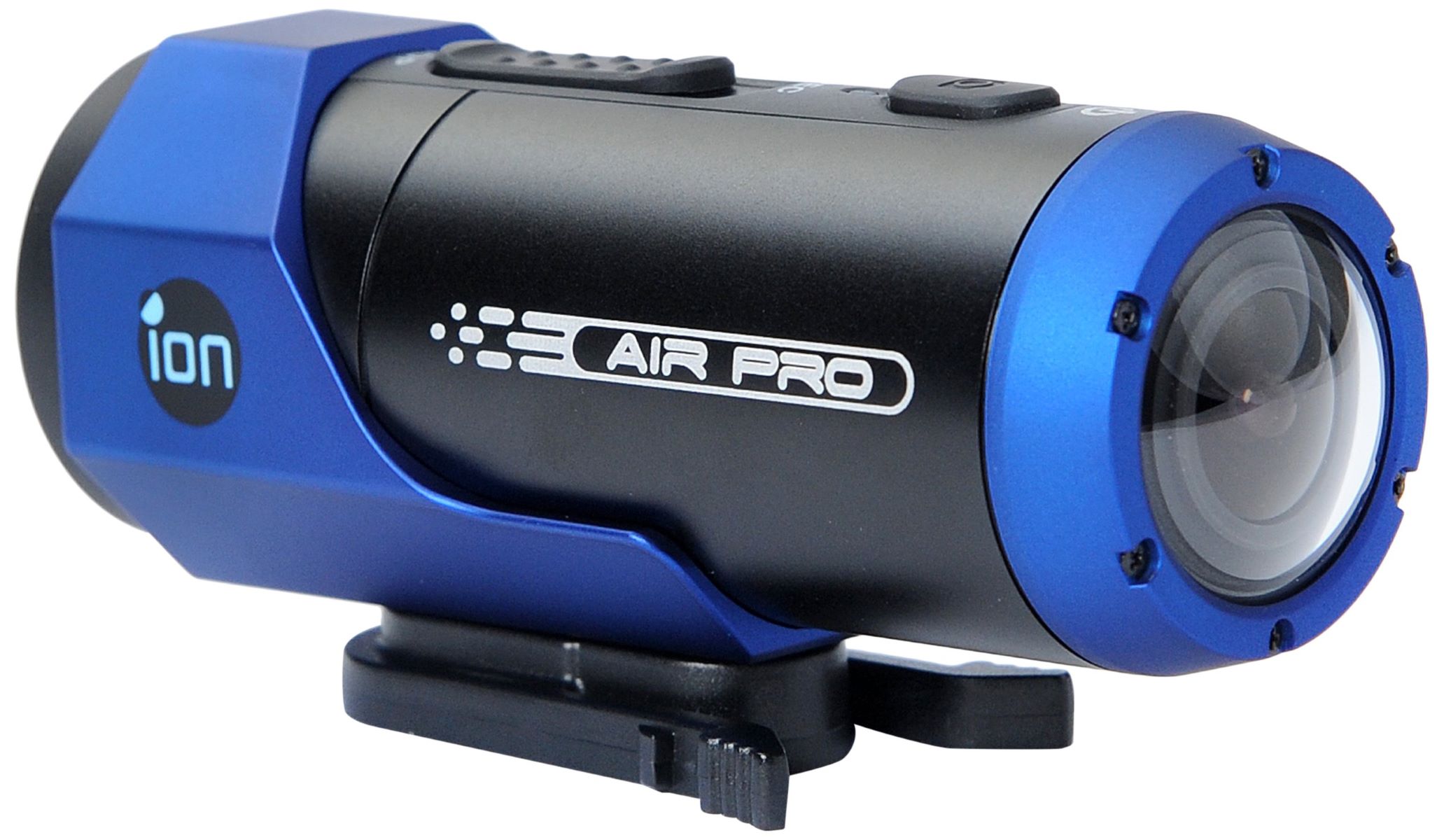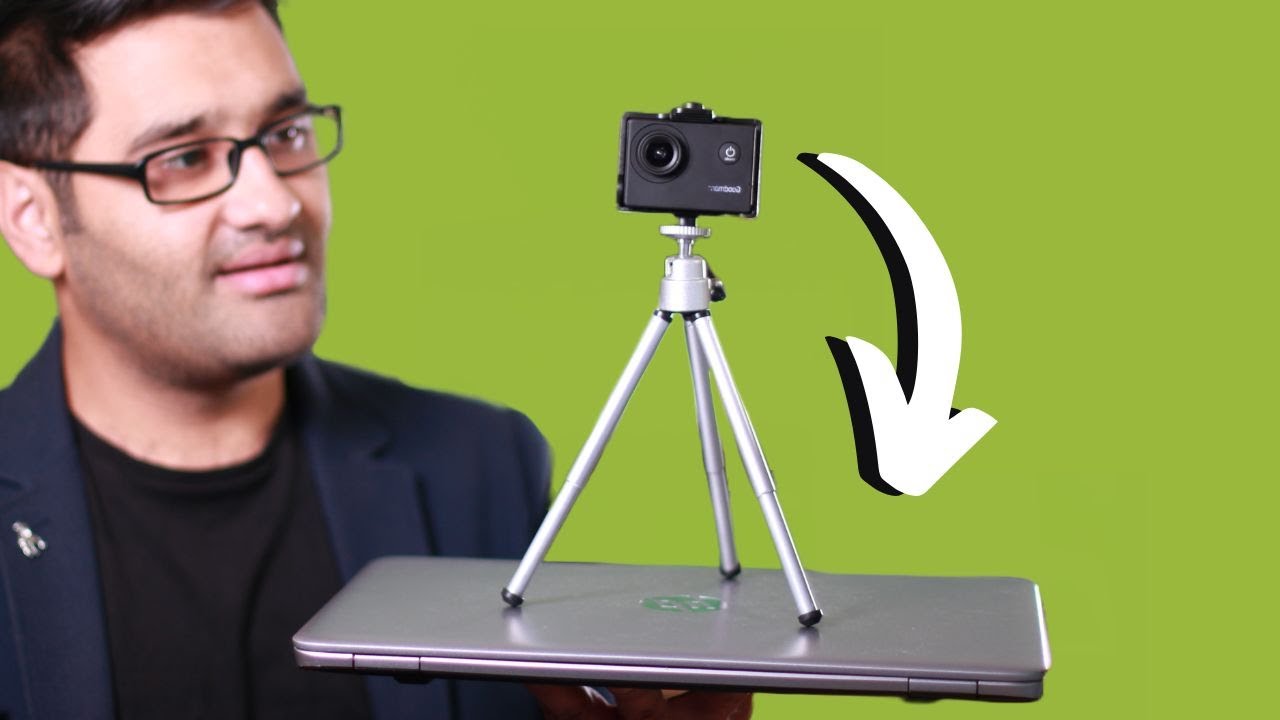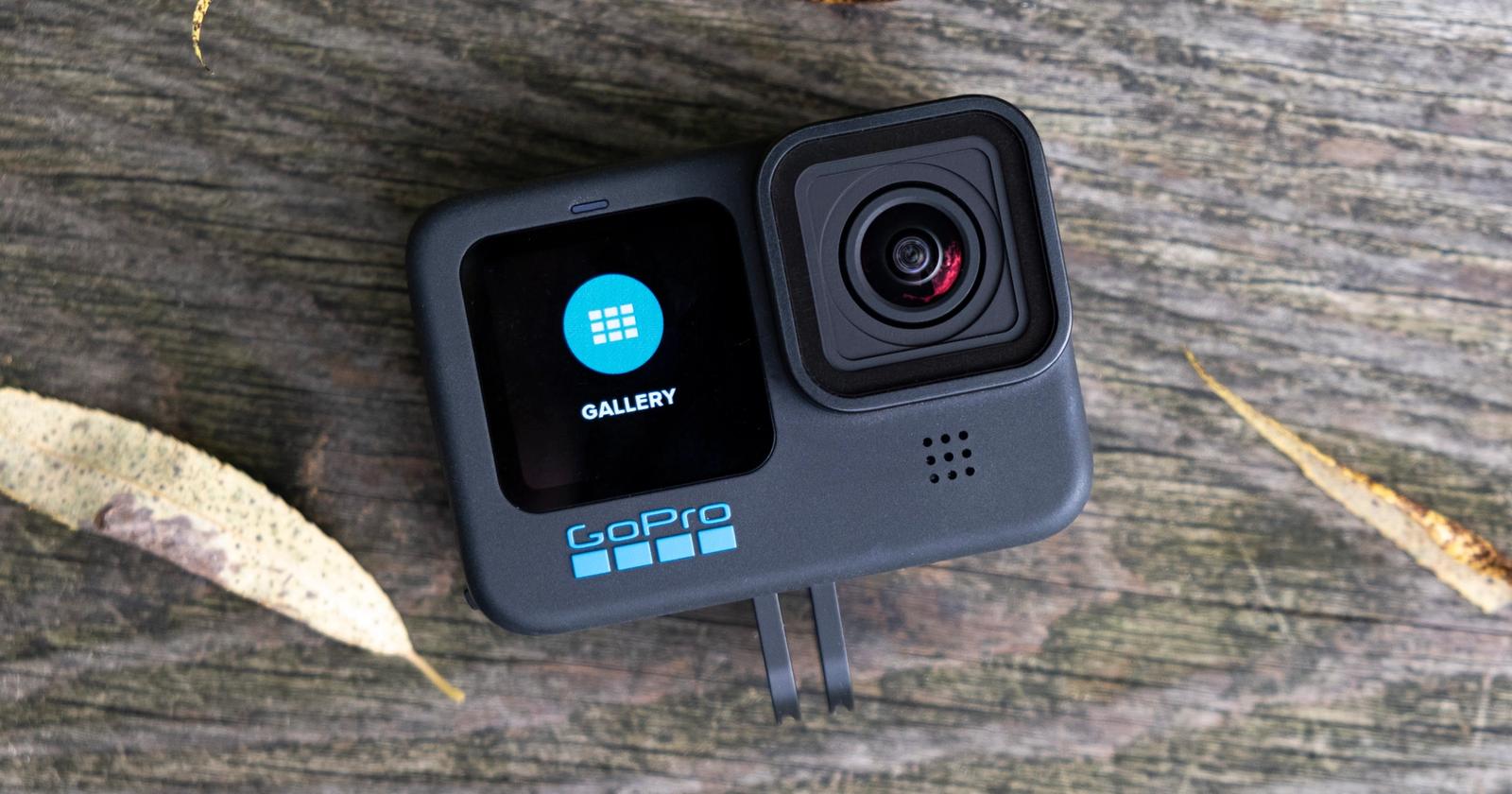Introduction
Setting up a live action camera is an essential skill for capturing dynamic and immersive footage. Whether you are filming sports events, wildlife, or documentaries, the process of preparing and adjusting the camera is crucial to achieving high-quality results. This guide will walk you through the key steps to set up a live action camera, from choosing the right equipment to adjusting camera settings and conducting tests.
Capturing live action requires careful consideration of various factors, such as lighting conditions, movement of the subjects, and the desired visual impact. With the right camera and lens setup, along with proper adjustments, you can ensure that your footage is sharp, well-composed, and visually compelling. Additionally, understanding how to fine-tune camera settings and conduct tests will help you optimize the equipment for the specific requirements of the shoot.
By following this comprehensive guide, you will gain the knowledge and confidence to set up a live action camera effectively, enabling you to capture captivating footage that truly brings the viewer into the heart of the action. Let's dive into the process of selecting the right camera and lens for your needs.
Choosing the Right Camera
When setting up a live action camera, selecting the appropriate equipment is the first crucial step. The choice of camera will significantly impact the quality and versatility of the footage you capture. Consider the following factors to ensure you choose the right camera for your specific needs:
- Resolution: The resolution of the camera determines the level of detail in the footage. For live action, especially in scenarios with fast movement, a higher resolution camera can capture finer details, providing a more immersive viewing experience.
- Frame Rate: The frame rate of the camera is vital for capturing smooth motion. Higher frame rates, such as 60 frames per second (fps) or more, are ideal for live action footage, especially for sports events or fast-paced action scenes.
- Low-Light Performance: Consider the camera’s performance in low-light conditions, as live action settings may involve varying light levels. A camera with excellent low-light capabilities ensures that you can capture clear footage even in challenging environments.
- Stabilization: For live action, especially when filming handheld or in motion, built-in stabilization features can greatly improve the overall quality of the footage, reducing unwanted camera shake and ensuring smooth, steady shots.
- Weather Sealing: If you anticipate shooting live action footage in outdoor or rugged environments, opt for a camera with weather sealing to protect it from dust, moisture, and other environmental factors.
Additionally, consider the compatibility of the camera with accessories such as external microphones, mounts, and additional lenses, as these can enhance the versatility and overall quality of the footage. By carefully evaluating these factors, you can select a camera that meets the specific demands of live action filming, ensuring that you capture stunning and immersive footage with ease.
Selecting the Right Lens
Choosing the right lens is just as critical as selecting the camera itself when setting up for live action filming. The lens you choose profoundly influences the visual style and storytelling capabilities of your footage. Consider the following factors when selecting a lens for live action:
- Focal Length: The focal length of the lens determines the field of view and magnification of the captured image. For live action, a versatile zoom lens with a wide focal range can be advantageous, allowing you to adapt to changing shooting conditions and capture a variety of perspectives without needing to switch lenses frequently.
- Aperture: A lens with a wide maximum aperture, such as f/2.8 or wider, is beneficial for live action filming, especially in low-light conditions. A wider aperture allows more light to enter the lens, enabling you to maintain faster shutter speeds and achieve a shallower depth of field, which can help isolate subjects from the background and create a more cinematic look.
- Image Stabilization: When filming live action, especially handheld or in dynamic environments, a lens with built-in image stabilization can greatly improve the stability and overall quality of the footage, reducing the impact of camera shake and ensuring smoother, more professional-looking shots.
- Weather Resistance: If you anticipate shooting live action in outdoor or challenging environments, consider lenses with weather-sealed construction to protect against dust, moisture, and other environmental elements, ensuring the durability and reliability of your equipment.
- Auto-Focus Performance: For fast-paced live action scenarios, reliable and swift auto-focus capabilities are essential. Look for lenses with advanced auto-focus motors and tracking systems to ensure that your footage remains sharp and focused, even during rapid subject movement.
By carefully evaluating these lens characteristics and considering the specific requirements of your live action filming, you can select a lens that complements your chosen camera and empowers you to capture visually stunning and compelling footage. With the right combination of camera and lens, you can set the stage for immersive and captivating live action cinematography.
Setting Up the Camera
Once you have chosen the right camera and lens for your live action shoot, the next step is to properly set up the equipment to ensure optimal performance and quality. Follow these essential steps to prepare the camera for capturing dynamic live action footage:
- Mounting the Camera: Securely attach the camera to a stable and appropriate mounting system, such as a tripod, gimbal, or other support equipment. Ensure that the mounting system provides stability and allows for smooth adjustments during filming.
- Attaching the Lens: Carefully attach the selected lens to the camera, ensuring that it is securely mounted and aligned. Double-check the lens connections and locking mechanisms to prevent any potential issues during filming.
- Balancing and Stabilizing: If using a gimbal or stabilizing rig, carefully balance the camera and calibrate the stabilization system to ensure smooth and steady footage, especially when capturing live action with movement or motion.
- Powering and Charging: Ensure that the camera’s batteries are fully charged and that you have sufficient backup power sources available, especially for extended live action shoots. Check the battery levels and consider using external power solutions for prolonged filming sessions.
- Memory Cards and Storage: Use high-capacity, high-speed memory cards to accommodate the large file sizes generated by live action filming. Verify that the memory cards are formatted and functioning correctly to prevent any interruptions during recording.
- Camera Settings: Set the camera’s initial parameters, including resolution, frame rate, white balance, and picture profile settings, based on the specific requirements of the live action shoot. Consider the desired visual style and technical considerations when configuring these settings.
By meticulously following these steps, you can ensure that the camera is properly set up and ready to capture high-quality live action footage. Attention to detail during the setup process is crucial for achieving professional results and maximizing the potential of your chosen camera and lens combination.
Adjusting Camera Settings
After setting up the physical components of the camera, it’s essential to adjust the internal settings to optimize the equipment for capturing live action footage. The following adjustments and configurations are vital for achieving the desired visual results and technical performance:
- Resolution and Frame Rate: Select the appropriate resolution and frame rate based on the specific requirements of the live action shoot. Higher resolutions, such as 4K or higher, can provide exceptional detail, while higher frame rates enable smooth slow-motion playback for dynamic action sequences.
- White Balance: Set the white balance to accurately represent the colors in the scene. Consider the prevailing lighting conditions and adjust the white balance settings to ensure natural and consistent color reproduction throughout the footage.
- Exposure and Shutter Speed: Adjust the exposure settings to achieve the desired brightness and contrast in the footage. Additionally, set the shutter speed to effectively capture motion, ensuring that fast-moving subjects are sharp and well-defined without excessive motion blur.
- Picture Profiles and Color Grading: Utilize picture profiles or color grading settings to establish the visual style and tone of the footage. Consider the mood and atmosphere of the live action scenario and adjust the color settings to enhance the overall impact and storytelling potential of the footage.
- Auto-Focus and Tracking: Configure the auto-focus and subject tracking settings to ensure that the camera can accurately and swiftly maintain focus on moving subjects during live action filming. Test the auto-focus performance to verify its reliability in dynamic shooting environments.
- Audio Settings: If capturing live action with sound, configure the audio settings, including microphone input levels, wind noise reduction, and audio monitoring, to ensure clear and high-quality sound recording that complements the visual footage.
By carefully adjusting these camera settings, you can tailor the equipment to the specific demands of the live action shoot, ensuring that the footage is visually compelling, technically proficient, and effectively conveys the energy and excitement of the captured moments.
Testing the Camera
Before commencing the actual live action filming, thorough testing of the camera setup is essential to identify and address any potential issues, ensure optimal performance, and fine-tune the equipment for the specific shooting conditions. The following testing procedures are crucial for preparing the camera to capture high-quality live action footage:
- Focusing and Tracking: Test the camera’s auto-focus capabilities, especially in scenarios with rapid subject movement. Verify that the focus tracking accurately follows the intended subjects, ensuring that the footage remains sharp and well-defined throughout dynamic action sequences.
- Motion and Stabilization: Conduct tests to evaluate the effectiveness of the camera’s stabilization features, especially if filming handheld or in motion-intensive environments. Verify that the footage remains stable and smooth, minimizing the impact of unwanted camera shake or jitter.
- Exposure and Lighting: Capture test footage in various lighting conditions to assess the camera’s exposure settings and the overall image quality. Ensure that the footage maintains appropriate brightness, contrast, and color accuracy, even in challenging or changing lighting environments.
- Audio Recording: If recording live action with sound, conduct audio tests to evaluate the quality and clarity of the captured audio. Check for any unwanted background noise, wind interference, or audio level inconsistencies, ensuring that the sound recording complements the visual footage effectively.
- Performance in Challenging Conditions: Simulate the specific conditions expected during the live action shoot, such as fast-paced movement, low-light environments, or adverse weather conditions, to assess the camera’s performance and adaptability. Address any issues or limitations identified during these tests to ensure preparedness for the actual shoot.
Thoroughly testing the camera setup allows you to address any potential challenges or technical issues before the actual live action filming, providing confidence in the equipment’s capabilities and minimizing the risk of unexpected complications during the shoot. By conducting comprehensive tests, you can fine-tune the camera for optimal performance and ensure that it is ready to capture stunning and immersive live action footage.
Conclusion
Setting up a live action camera involves a meticulous process of selecting the right equipment, configuring the camera settings, and conducting thorough tests to ensure optimal performance. By carefully considering factors such as resolution, frame rate, lens characteristics, and environmental adaptability, you can tailor the camera setup to the specific demands of live action filming, enabling you to capture immersive and visually compelling footage.
Choosing the right camera and lens is the foundation of a successful live action setup. By evaluating factors such as resolution, frame rate, low-light performance, and stabilization, you can select equipment that meets the technical requirements of dynamic and fast-paced shooting scenarios. Additionally, the proper selection of lenses with versatile focal lengths, wide apertures, and advanced stabilization features enhances the visual storytelling capabilities and adaptability of the camera setup.
Once the physical setup is complete, adjusting the internal camera settings is crucial for optimizing the equipment for live action filming. Configuring resolution, frame rate, white balance, exposure, and audio settings allows you to tailor the camera to the specific shooting conditions, ensuring that the footage is technically proficient and visually captivating.
Thoroughly testing the camera setup before the actual shoot is essential for identifying and addressing any potential issues, fine-tuning the equipment, and gaining confidence in its capabilities. Focusing on aspects such as auto-focus performance, motion stabilization, exposure consistency, and audio recording quality allows you to address any technical challenges and ensure that the camera is ready to deliver exceptional results during live action filming.
By following the comprehensive process of setting up a live action camera, from equipment selection to testing, you can capture captivating footage that transports viewers into the heart of the action. The careful consideration of technical and creative aspects, coupled with meticulous preparation, sets the stage for successful live action cinematography and ensures that your footage effectively conveys the energy, excitement, and immersive experience of the captured moments.







